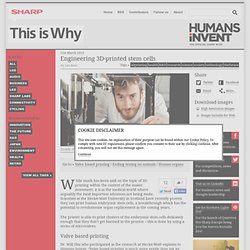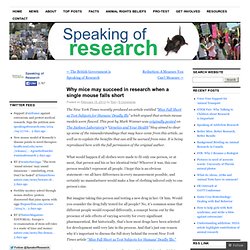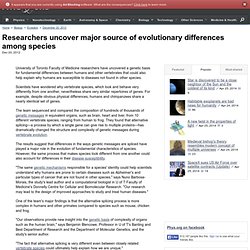

New drugs trail many old ones in effectiveness against disease. Unpatentable Drugs and the Standards of Patentability by Benjamin N. Roin. Harvard Law School February 2009 Texas Law Review, Vol. 87, pp. 503-570, 2009 Abstract: The role of the patent system in promoting pharmaceutical innovation is widely seen as a tremendous success story.

This view overlooks a serious shortcoming in the drug patent system: the standards by which drugs are deemed unpatentable under the novelty and non-obviousness requirement bear little relationship to the social value of those drugs or the need for a patent to motivate their development. If the idea for a drug is not novel or is obvious, perhaps because it was disclosed in an earlier publication or made to look obvious by recent scientific advances, then it cannot be patented. Yet the mere idea for a drug alone is generally of little value to the public. Number of Pages in PDF File: 68 Keywords: patent, patents, intellectual property, IP, drug, drugs, pharmaceutical, pharmaceuticals, FDA, novelty, obviousness, nonobvious, clinical trials, PTO, patent and trademark office Suggested Citation. Real-Life True Blood: Synthetic Blood Is Coming — And So Are a Host of Potential Complications. Image: HBO Season 6 of HBO’s vampire drama True Blood premieres on Sunday night, presumably following up on last year’s cliffhanger where the factory that produces Tru-Blood — the bottled synthetic blood that allows vampires go “vegetarian” — was burned to the ground, destroying the product that made it possible for vampires to non-violently co-exist with people.

But out here in the real world, the future of synthetic blood is just beginning. After decades of global research, controversies, and failed approval petitions, the UK’s Medical and Healthcare products Regulatory Agency finally gave researchers at the Scottish Centre for Regenerative Medicine the go-ahead late last month to start developing synthetic blood with adult stem cells. Organ-on-a-chip. An Organ-on-a-Chip (OC) is a multi-channel 3-D microfluidic cell culture chip that simulates the activities, mechanics and physiological response of entire organs and organ systems.[1] It constitutes the subject matter of significant biomedical engineering research, more precisely in bio-MEMS.

The convergence of Lab-on-Chips (LOCs) and cell biology has permitted the study of human physiology in an organ-specific context, introducing a novel model of in vitro multicellular human organisms. One day, they will perhaps abolish the need for animals in drug development and toxin testing. Although multiple publications claim to have translated organ functions onto this interface, the movement towards this microfluidic application is still in its infancy. Nina Tandon: Could tissue engineering mean personalized medicine? Engineering 3D-printed stem cells. Inside the stem cell printer.

Science & Society. Editing the genome with high precision. Researchers at MIT, the Broad Institute and Rockefeller University have developed a new technique for precisely altering the genomes of living cells by adding or deleting genes.

The researchers say the technology could offer an easy-to-use, less-expensive way to engineer organisms that produce biofuels; to design animal models to study human disease; and to develop new therapies, among other potential applications. To create their new genome-editing technique, the researchers modified a set of bacterial proteins that normally defend against viral invaders. Using this system, scientists can alter several genome sites simultaneously and can achieve much greater control over where new genes are inserted, says Feng Zhang, an assistant professor of brain and cognitive sciences at MIT and leader of the research team. Zhang and his colleagues describe the new technique in the Jan. 3 online edition of Science. Lead authors of the paper are graduate students Le Cong and Ann Ran.
Early efforts. Light-up tumors show aging in real-time. UNC-CHAPEL HILL (US) — Mice with glowing tissue allow scientists to visualize aging and tumor growth using a gene closely linked to both processes.

Researchers have long known that the gene, p16INK4a (p16), plays a role in aging and cancer suppression by activating an important tumor defense mechanism called “cellular senescence.” A team led by Norman Sharpless, Professor of Cancer Research at University of North Carolina, has developed a strain of mice that turns on a gene from fireflies when the normal p16 gene is activated. Why mice may succeed in research when a single mouse falls short. The New York Times recently produced an article entitled “Mice Fall Short as Test Subjects for Humans’ Deadly Ills” which argued that certain mouse models were flawed.

This post by Mark Wanner was originally posted on The Jackson Laboratory‘s “Genetics and Your Health” blog aimed to clear up some of the misunderstandings that may have come from this article, as well as to explain the benefits that can still be accrued from mice. It is being reproduced here with the full permission of the original author.
Health Testing on Mice Is Found Misleading in Some Cases. Researchers uncover major source of evolutionary differences among species. University of Toronto Faculty of Medicine researchers have uncovered a genetic basis for fundamental differences between humans and other vertebrates that could also help explain why humans are susceptible to diseases not found in other species.

Scientists have wondered why vertebrate species, which look and behave very differently from one another, nevertheless share very similar repertoires of genes. For example, despite obvious physical differences, humans and chimpanzees share a nearly identical set of genes. NIH told to retire most research chimpanzees.